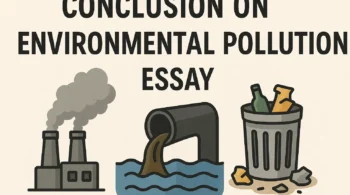Air pollution is a critical issue that affects the health and well-being of people and the environment. As such, conducting a thorough research project or essay on air pollution is crucial for understanding its causes, consequences, and potential solutions.
One key section of any air pollution essay is the conclusion. The conclusion section serves an important purpose in summarizing the findings and insights gathered throughout the study, and it is essential for providing closure and clarity to the research.
What is the purpose of conclusion in air pollution essay?
The conclusion section of an air pollution essay or project file is a crucial part of the overall document, as it brings together all the data, analysis, and discussions presented in the research. It enables the researcher to draw out key takeaways and implications, as well as offer recommendations for addressing the issue of air pollution. This section also provides an opportunity to reflect on the study’s limitations and suggest avenues for future research.
The importance of the conclusion section extends beyond the main content. It serves as a valuable resource for policymakers, environmental organizations, and other stakeholders who seek to understand the implications of the study and take action to mitigate air pollution. The conclusion section plays a pivotal role in communicating the significance of the research and advocating for change in policy and behavior to address air pollution effectively.
How to write conclusion of air pollution?
When writing the conclusion of air pollution, it is important to summarize the key findings and insights from the research. The conclusion should also restate the purpose of the document and provide a clear and concise ending to the report. To achieve this, follow these steps:
Summarize the main points: Begin the conclusion by summarizing the key findings and insights. This will remind the readers of the important information discussed in the report and reinforce the significance of the research.
Restate the purpose: Remind the readers of the main purpose of the project or essay, and how it was addressed throughout the report. This will help reinforce the importance of the research and its implications for addressing air pollution.
Discuss the implications: Consider the potential implications of the findings on air pollution and its effects on the environment and public health. This will demonstrate the significance of the research and its potential impact on addressing air pollution in the future.
Recommend actions: Offer recommendations for potential actions that can be taken to address air pollution based on the findings of past research. This can include policy changes, technological advancements, or public awareness campaigns.
Tie to the introduction: Connect the conclusion back to the introduction by highlighting how the essay has addressed the initial questions or hypotheses.
When writing the conclusion, it is important to maintain a tone that is authoritative and insightful. Use language that conveys confidence in the research and its implications, while also being respectful and considerate of the potential impact of air pollution on the environment and public health. Avoid using overly emotional or sensational language, and instead focus on presenting the conclusions in a clear and objective manner.
Additionally, be mindful of the length of the conclusion, aiming to be concise while still effectively summarizing the key points and insights from the project. A well-written conclusion will leave the readers with a strong understanding of the research and its potential impact on addressing air pollution.
Sampel conclusion of air pollution
In conclusion, air pollution is a pressing issue that requires immediate attention and action. The detrimental effects of air pollution on human health, the environment, and the economy are well-documented and cannot be ignored. It is imperative that governments, industries, and individuals take proactive measures to reduce air pollution and protect the well-being of current and future generations. This can be achieved through the implementation of stringent regulations on emissions, the promotion of sustainable energy sources, and the adoption of cleaner technologies.
Additionally, public awareness and education on the impact of air pollution are crucial in catalyzing widespread support and behavioral change. Individuals can also play a part in combatting air pollution by making conscious choices in their daily activities, such as reducing energy consumption, using public transportation, and supporting environmentally-friendly products. Collaboration and collective efforts across all sectors of society are vital in addressing the complex and interconnected issues associated with air pollution.
While the task of mitigating air pollution may seem daunting, it is not insurmountable if there is a shared commitment to prioritize the health of the planet and its inhabitants. Every small step towards reducing air pollution contributes to a healthier and more sustainable future for all. It is imperative that we work together to combat air pollution and safeguard the quality of the air that we breathe.

Conclusion for air pollution project example
The findings of this research project highlight the pressing need to address air pollution in our city. The data analysis clearly shows that particulate matter levels exceed healthy standards, putting residents at risk of respiratory illness and other health effects. Children and the elderly are especially vulnerable to the impacts of poor air quality.
To mitigate air pollution, a multi-pronged approach is required. Stricter regulations on industrial emissions are needed to reduce pollution from factories and other facilities. Providing incentives for public transit, carpooling, and electric vehicles can lessen automobile emissions. Urban planning strategies like increasing green spaces and tree cover will also help improve air quality.
On an individual level, residents can reduce their exposure to pollutants by checking air quality forecasts and limiting outdoor activities on high pollution days. Civic engagement and advocacy for stronger air pollution policies are also impactful. Together, through collaborative systemic and personal efforts, our city can work towards cleaner, healthier air.
The findings of this air pollution project highlight an urgent public health issue. Concerted efforts are required to enact solutions that will improve air quality and protect the wellbeing of all residents. This research provides a meaningful contribution towards that goal.






